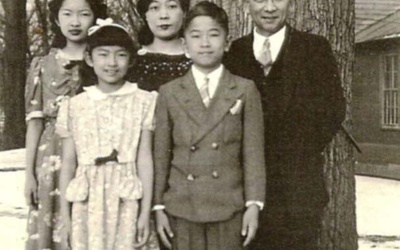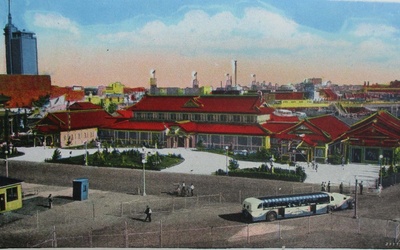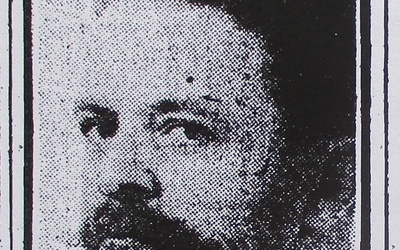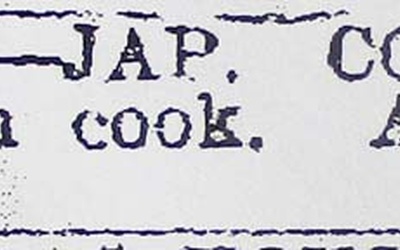Illinois Japanese Unknown Heroes
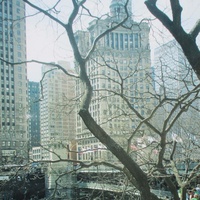
Before World War II, there were far fewer Japanese in Chicago than after the war. As a result, more attention has been paid to postwar Chicago Japanese, many of whom chose Chicago as a place to resettle after enduring the humiliation of incarceration camps in the western US. But although they were a small minority in the bustling metropolis of Chicago, the prewar Japanese were in fact unique, colorful, and independent people, perfectly matched to the cosmopolitanism of Chicago, and enjoyed their lives in Chicago. This series would focus on lives of regular Japanese in pre-war Chicago.
Stories from this series
Chapter 1 (Part 7): Japanese Garden Designers, Domestic Workers, and their “Japanophile” Employers—Japanese Gardener, Susumu Kobayashi, and Cook Junji George Matsumoto at Riverbank
July 17, 2022 • Takako Day
Read Chapter 1 (Part 6) >> After Taro Otsuka left Riverbank, another Japanese gardener named Oscar Susumu Kobayashi took over maintaining the garden Otsuka had built for George Fabyan around 1910. Kobayashi had met Otsuka at the Japanese YMCA in Chicago around 1917,1 when he was there looking for a job. In the years that followed, Otsuka and Kobayashi were close enough that Kobayashi let Otsuka stay at his place in Florida for several weeks in the winter of 1923-24, …
Chapter 1 (Part 6): Japanese Garden Designers, Domestic Workers, and their “Japanophile” Employers—Taro Otsuka from Chicago to New York City
July 10, 2022 • Takako Day
Read Chapter 1 (Part 5) >> In 1921, Otsuka moved to 216 North Michigan Avenue1 following Maruyama’s next business move,2 although the new location was “a less desirable location (than 300 S Michigan Avenue.)”3 In addition, Maruyama changed his business name to the Toyo Importing Company because, according to Beth Cody, “the Toyo Art Shop no longer carried just high-end art, but also included common decorative and household items.”4 When Maruyama’s business began declining, Otsuka had to think of another means for survival …
Chapter 1 (Part 5): Japanese Garden Designers, Domestic Workers, and their “Japanophile” Employers—Taro Otsuka, Japanese Garden Designer
July 3, 2022 • Takako Day
Read Chapter 1 (Part 4) >> Taro Otsuka was born in 1868 in Kochi, Japan and rumored to be an activist and a comrade of Taisuke Itagaki, a liberal politician who advocated for liberty and civil rights in the 1880s in Japan.1 At age 30, he arrived in Seattle on December 21, 18972, leaving his wife in Japan. He listed his profession as “mineral works” and his contact in the U.S. as “T. Kataoka” in Tacoma, Washington.3 This “T. Kataoka” was …
Chapter 1 (Part 4): Japanese Garden Designers, Domestic Workers, and their “Japanophile” Employers—“Honorary Japanese Consul” George Fabyan in Geneva, IL
June 26, 2022 • Takako Day
Read Chapter 1 (Part 3) >> In the early 20th century, there was another “prominent capitalist”1 in Geneva, a town along the Fox River, forty miles west of Chicago, who enjoyed employing Japanese domestic workers at his villa. His name was George Fabyan, and, according to some accounts, was considered to be an “Honorary Japanese Consul”2 before the Japanese Consulate was established in Chicago in 1897. Fabyan was well-known for entertaining Japanese celebrities and was rumored to be a friend of …
Chapter 1 (Part 3): Japanese Garden Designers, Domestic Workers, and their “Japanophile” Employers—Torajiro and Kiku Hamano and Julius Rosenwald in Chicago
June 19, 2022 • Takako Day
Read Chapter 1 (Part 2) >> Possibly the luckiest and most successful Japanese domestic worker in Chicago was Torajiro Hamano, who worked for twenty years for Julius Rosenwald, one of the founders of Sears, Roebuck and Company. According to the 1910 census, two single Japanese men lived in Rosenwald’s mansion at 4901 Ellis Ave. One was (Torajiro) “Kiku” Hamano, a 28-year-old butler, and the other was a 27-year-old Japanese houseman, Sakurain Louis, who were on staff along with two Norwegian …
Chapter 1 (Part 2): Japanese Garden Designers, Domestic Workers, and their “Japanophile” Employers—Popularity and Criticism of Japanese Servants
June 12, 2022 • Takako Day
Read Chapter 1 (Part 1) >> Looking at the overall picture of the service industry in those days, we find that Japanese immigrants with the right qualifications reported to be equal to the “splendid record of the older generation of black servants in the South” and thus, were placed in competition with the younger generation of African Americans in the industrious North. At the same time, Japanese people were not treated equally with whites in the polarized “black or white” …

